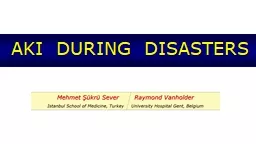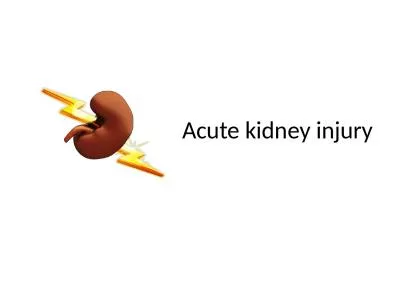PPT-AKI Definition : Stages : ( RIFLE vs. AKIN )
Author : sherrill-nordquist | Published Date : 2020-04-02
Causes and classification Prerenal Renal Post renal Clinical manifestations and Complication Management and indications for RRT Etiology prerenal causes decreased
Presentation Embed Code
Download Presentation
Download Presentation The PPT/PDF document " AKI Definition : Stages : ( RIFLE vs...." is the property of its rightful owner. Permission is granted to download and print the materials on this website for personal, non-commercial use only, and to display it on your personal computer provided you do not modify the materials and that you retain all copyright notices contained in the materials. By downloading content from our website, you accept the terms of this agreement.
AKI Definition : Stages : ( RIFLE vs. AKIN ) : Transcript
Download Rules Of Document
" AKI Definition : Stages : ( RIFLE vs. AKIN ) "The content belongs to its owner. You may download and print it for personal use, without modification, and keep all copyright notices. By downloading, you agree to these terms.
Related Documents














